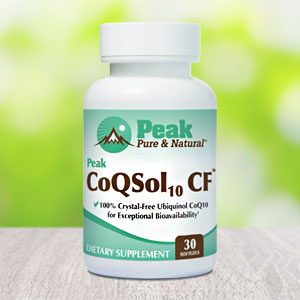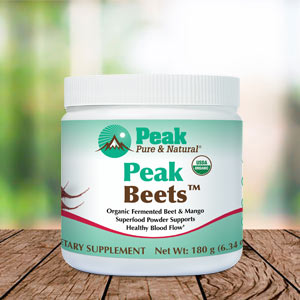Get Easy Health Digest™ in your inbox and don’t miss a thing when you subscribe today. Plus, get the free bonus report, Mother Nature’s Tips, Tricks and Remedies for Cholesterol, Blood Pressure & Blood Sugar as my way of saying welcome to the community!
The unique way polyphenols improve heart and brain health

Polyphenols are powerful plant metabolites. The reason they are so powerful is because of their antioxidant properties.
There are more than 8,000 identified varieties of polyphenols, and they’re plentiful in various fruits and vegetables, extra-virgin olive oil, tea and coffee. Some of the highest sources are berries.
Studies indicate polyphenols have a powerful impact on our well-being.
But despite mountains of research into those benefits involving cardiovascular diseases, neurodegenerative conditions and age-related sensory decline — there have been gaps in understanding how they do what they do in the body. One reason is due to their low bioavailability.
Some interesting research seems to have nailed it down and provided a nice list of benefits you don’t want to miss out on…
Polyphenols are bitter for a reason
Unlike vitamin levels that can be measured in the blood, polyphenols are not present in the blood or in organs. When foods containing polyphenols are eaten, intestinal bacteria usually break down polyphenols to exit the body with other waste.
However, recent studies have found that ingested polyphenols have an impact while they’re in the gut: they alter the composition of the gut microbiome, which then alters the composition of secondary metabolites in the colon.
The theory is these altered metabolites may be absorbed and affect metabolic and cognitive functions. And they may do that through sensory receptors that are widely distributed throughout our bodies.
Sensory nutrition is a relatively new field of study examining the communication between the food and beverages consumed, the brain and its impact on human behavior. Some reports suggest food signals contribute to homeostasis, or equilibrium within the body, via gut-based sensory receptors.
Using sensory nutrition, researchers discovered several ways polyphenols, which are inherently bitter in taste, interact with the body’s bitter taste receptors — which are expressed in several of the body’s tissues, including the gastrointestinal tract — ultimately influencing metabolic pathways and promoting overall health, including:
- Guards against heart problems: It was suggested the astringency of polyphenols was a sensation that can occur anywhere in the body. It was connected with improved blood pressure and risk factors for heart diseases.
- Promotes normal blood flow: At moderate doses, polyphenols caused a marked increase in blood flow-dependent vasorelaxation (FMD) levels. Vasorelaxation, also known as vasodilation, is the widening of blood vessels. When blood vessels are wider, blood flow faces less resistance or pressure.
- Lowers blood pressure: One animal study showed repeated intake of astringent polyphenols significantly reduced FMD response along with blood pressure.
- Promotes blood sugar regulation: Consumption of bitter polyphenols increases secretion of gastrointestinal hormones, leading to the regulation of blood glucose levels and glucose tolerance.
- Promotes brain health: Researchers noted astringent polyphenols regulate the activation of the hypothalamic-pituitary-adrenal (HPA) axis, improving mood and memory function.
- Promotes healthy weight: The bitter and astringent perception of polyphenols are believed to have anti-obesity effects.
To sum up, these findings strongly suggested that polyphenols work in the body via sensory receptors of the gastrointestinal tract, ultimately influencing metabolic pathways and promoting overall well-being.
Putting polyphenols to work in your diet
According to Naomi Osakabe, a professor at Shibaura Institute of Technology in Tokyo, “Our study is the first to identify that sensory stimuli in food can promote homeostasis and paves the way for the development of novel food products aimed at promoting human health,”
That’s certainly a convenient idea… but you can take advantage of polyphenols’ health-promoting benefits just by eating red and purple fruits and vegetables, coffee, tea and dark chocolate.
Some of the foods with highest amounts of polyphenols include:
- Berries, especially elderberries, chokeberries, blueberries and black currants
- Herbs and spices like cloves, peppermint and star anise
- Cocoa powder
- Nuts, especially chestnuts, hazelnuts and pecans
- Flaxseeds
- Vegetables like artichokes and red onions
- Olives
One way to make sure you get the maximum benefit from polyphenols is to consume them with protein. One study showed that alpha-casein, a protein found in cow’s milk, helped rats being fed blueberries absorb more of the anthocyanins — particularly powerful polyphenols — from the fruit.
Editor’s note: Did you know that when you take your body from acid to alkaline you can boost your energy, lose weight, soothe digestion, avoid illness and achieve wellness? Click here to discover The Alkaline Secret to Ultimate Vitality and revive your life today!
Sources:
1. Deciphering the role of bitter and astringent polyphenols in promoting well-being — ScienceDaily
2. Sensory Nutrition and Bitterness and Astringency of Polyphenols — Biomolecules
3. Healthy Foods High in Polyphenols — Nourish by WebMD














